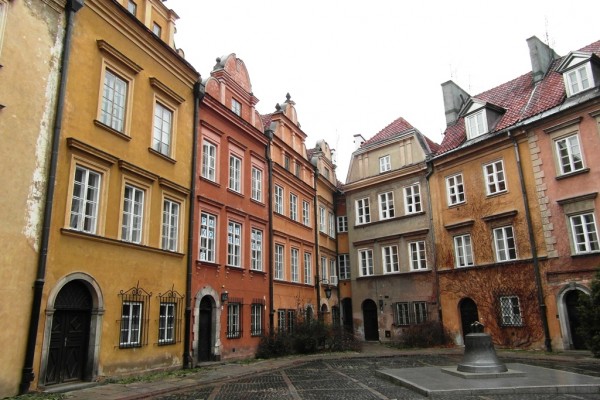
It is no secret I have a thing for Eastern Europe – why else would I spend a month in Ukraine in the dead of winter freezing my butt off, right? So when I heard about Francis Tapon’s new book, The Hidden Europe: What Eastern Europeans Can Teach Us, I immediately emailed him and begged for an advance copy to review. Lucky for me, he obliged.
Not only did The Hidden Europe make for perfect reading material as I cruised across the Black Sea, ending the Eastern European phase of my trip, it left me itching to head back at the next opportunity.
While I have explored a lot of Eastern Europe since last fall, I barely scratched the surface compared to Tapon, who spent five months traveling through Eastern Europe in 2004 and returned in 2008 to spend three years exploring the region again.
Tapon defines Eastern Europe broadly and geographically (rather than politically) to include 25 countries altogether.
So by his terms, Eastern Europe includes not just former Soviet bloc countries like Ukraine, Poland, the Baltics and the former Yugoslav nations. It also includes Finland, Greece and Turkey – three countries that I doubt anyone would typically consider to be in Eastern Europe.
While a book with 25 chapters about 25 countries may seem to be overkill, Tapon makes it work well.
With one chapter for each country, there isn’t a need to sit down and read it all together. If you are interested in just a few countries or gearing up for a trip, you can easily just skip to what interests you. That said, I personally recommend devouring it cover to cover. It flows nicely from chapter to chapter and if you don’t read it all, you might just miss something fascinating.
Having recently visited many of the countries featured in the book – the Baltics, Russia, Ukraine, Poland, Belarus and Moldova – I found myself nodding along with many of Tapon’s observations. For example, the following passage about the impact of World War II on Belarus was right on point:
“Let’s imagine what happened to Belarus in WWII happened to America. Imagine 100 million Americans dead – that every third person you know is dead. Imagine that most of our industry in Michigan, Ohio, Illinois and Silicon Valley obliterated. Imagine nearly three-fourths of our cities in ruin, including New York, Chicago, Miami, Los Angeles, Dallas, San Francisco, Seattle and Atlanta…Imagine Washington, D.C. completely flattened: the Washington Monument toppled, the US Capitol Building without a stone standing, the Lincoln Memorial a pile of rubble, and the White House a charred and burning mess.
Now imagine what kind of psychological trauma that would have on the generation trying to rebuild…”
Tapon weaves personal experiences almost seamlessly together with various historical facts and statistical figures that support the lessons of each chapter.
Because he shares stories from both his first trip and his later visits, occasional confusion ensues, but not so often that it detracts in any way from the message. In The Hidden Europe, you’ll unravel a plethora of myths surrounding Eastern Europe, many of which you probably weren’t familiar with in the first place. And you’ll learn everything from why Lithuanians are so proud of their country’s history to why Hungarians still think they got screwed after World War I to why everyone should want to marry a Croatian.
And if you’re like me, you’ll finish The Hidden Europe and want to hop on the next flight to Croatia or Hungary or one of the other 23 countries that comprise Eastern Europe.
The Hidden Europe: What Eastern Europeans Can Teach Us is available now on Amazon in hard cover and for your Kindle:
*Disclaimer: The above are affiliate links and I will earn a small commission on each sale.
